Historical Marker: Starting Point of the First Traditional New Orleans Mardi Gras Parade
Introduction
Text-to-speech Audio
Images
The marker is located on corner of the building facing Julia Street.
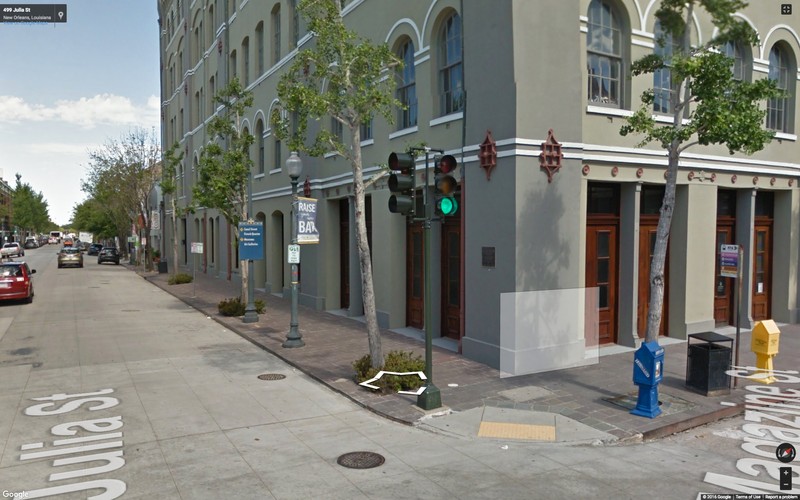
Mardi Gras in 1900
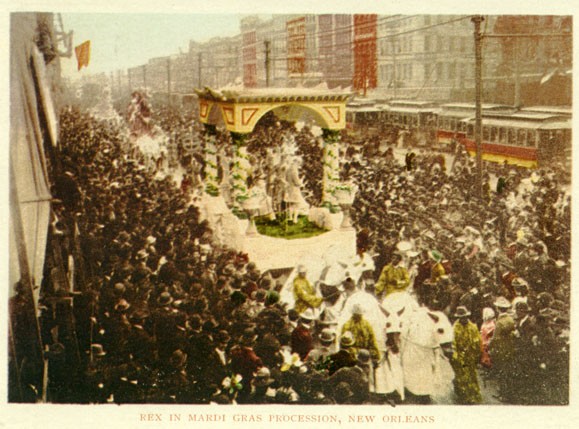
Mardi Gras in 1907
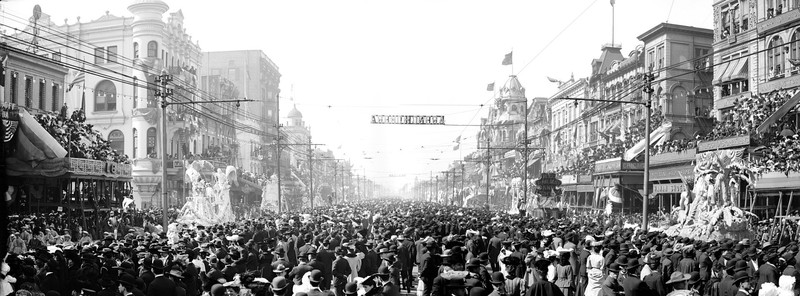
Mardi Gras in 1885
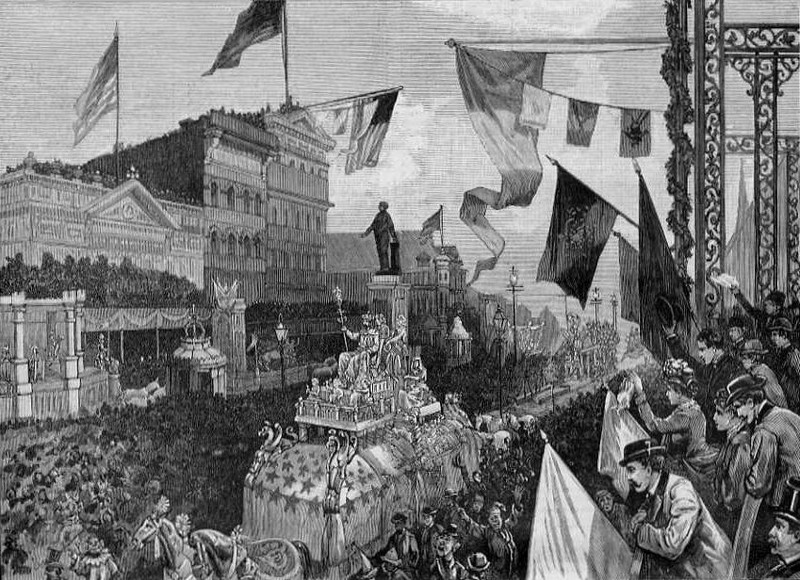
Revelers in Mardi Gras 2007
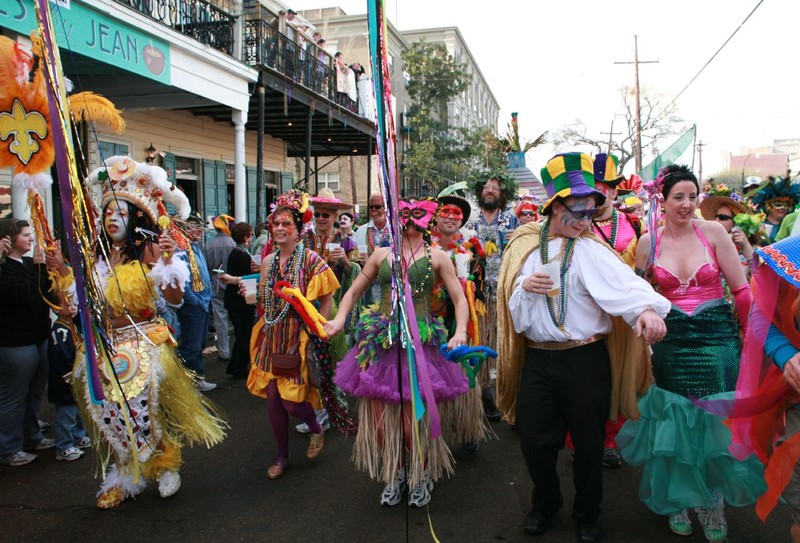
Close up of marker
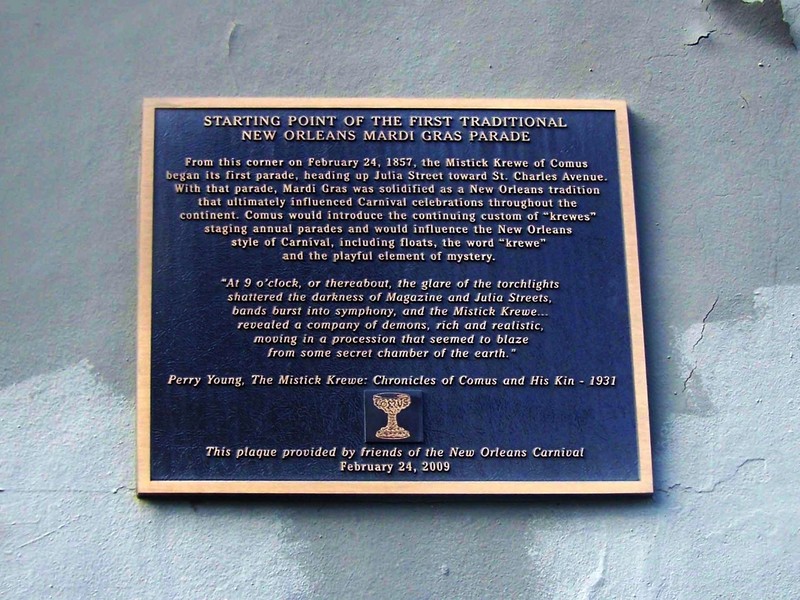
Backstory and Context
Text-to-speech Audio
The first record of the holiday being celebrated in Louisiana was at the mouth of the Mississippi River in what is now lower Plaquemines Parish, Louisiana, on March 2, 1699. Iberville, Bienville, and their men celebrated it as part of an observance of Catholic practice. The date of the first celebration of the festivities in New Orleans is unknown. A 1730 account by Marc-Antione Caillot celebrating
with music and dance, masking and costuming (including cross-dressing). An account from 1743 that the custom of Carnival balls was already established. Processions and wearing of masks in the streets on Mardi Gras took place. They were sometimes prohibited by law, and were quickly renewed whenever such restrictions were lifted or enforcement waned. In 1833 Bernard Xavier de Marigny de Mandeville, a rich plantation owner of French descent, raised money to fund an official Mardi Gras celebration.
In 1856 six businessmen gathered at a club room in New Orleans's French Quarter to organize a secret society to observe Mardi Gras with a formal parade. They founded New Orleans' first and oldest krewe, the Mystick Krewe of Comus. According to one historian, "Comus was aggressively English in its celebration of what New Orleans had always considered a French festival. It is hard to think of a clearer assertion than this parade that the lead in the holiday had passed from French-speakers to Anglo-Americans. . . .To a certain extent, Americans 'Americanized' New Orleans and its Creoles. To a certain extent, New Orleans 'creolized' the Americans. Thus the wonder of Anglo-Americans boasting of how their business prowess helped them construct a more elaborate version than was traditional. The lead in organized Carnival passed from Creole to American just as political and economic power did over the course of the nineteenth century. The spectacle of Creole-American Carnival, with Americans using Carnival forms to compete with Creoles in the ballrooms and on the streets, represents the creation of a New Orleans culture neither entirely Creole nor entirely American."
In 1875 Louisiana declared Mardi Gras a legal state holiday. War, economic, political, and weather conditions sometimes led to cancellation of some or all major parades, especially during the American Civil War, World War I and World War II, but the city has always celebrated Carnival.
1972 was the last year in which large parades went through the narrow streets of the city's French Quarter section; larger floats, crowds, and fire safety concerns led the city government to prohibit parades in the Quarter. Major parades now skirt the French Quarter along Canal Street.
In 1979 the New Orleans police department went on strike. The official parades were canceled or moved to surrounding communities, such as Jefferson Parish. Significantly fewer tourists than usual came to the city. Masking, costuming, and celebrations continued anyway, with National Guard troops maintaining order. Guardsmen prevented crimes against persons or property but made no attempt to enforce laws regulating morality or drug use; for these reasons, some in the French Quarter bohemian community recall 1979 as the city's best Mardi Gras ever.
The marker at this location has inscribed the following:
From this corner on February 24, 1857, the Mistick Krewe of Comus began its first parade, heading up Julia Street toward St. Charles Avenue. With that parade, Mardi Gras was solidified as a New Orleans tradition that ultimately influnced Carnival celebrations throughout the continent. Comus would introduce the continuing custom of "krewes" staging annual parades and would influence the New Orleans style of Carnival, including floats,the word "krewe" and the playful element of mystery.
" At 9:00 o'clock, or thereabout, the glare of the torchlights shattered the darkness of Magazine and Julia Streets, bands burst into symphony, and the Mistick Krewe... revealed a company of demons, rich and realistic, moving in a procession that seemed to blaze from some secret chamber of the earth."
Perry Young, The Mystick Krewe: Chronicles of Comus and His Kin - 1931
Sources
Creecy, James R. (1860). Scenes in the South, and Other Miscellaneous Pieces. Washington: T. McGill. pp. 43-44.
All on a Mardi Gras Day: Episodes in the History of New Orleans Carnival by Reid Mitchell. Harvard University Press: 1995. pp. 25-26
Three centuries of Mardi Gras history. From: carnaval.com.
